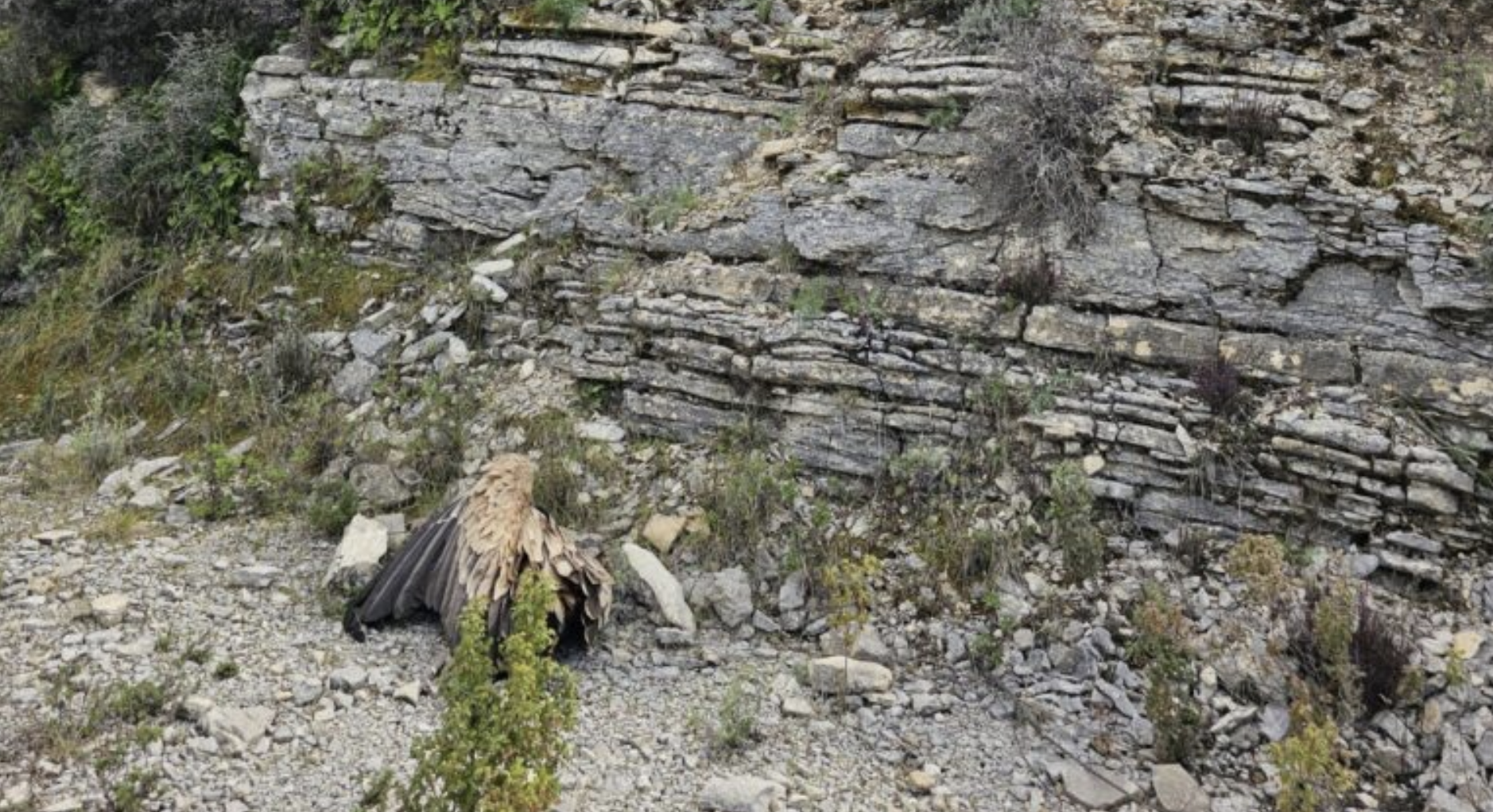
Eight months ago, a wind farm in Navarre, Spain, begun its operation, and ever since, it has caused significant biodiversity loss. Until today, over 100 large protected birds and raptors have died from collision with wind turbines. But this number may be even higher.
A wildlife mortality hotspot in the wind farm
Every three days, a vulture dies in the Cavar wind farm, consisting of 32 wind turbines located between Cadreita and Valtierra in Navarre, which began operating last July. Ever since then, the wind turbine blades have claimed the lives of many protected bird and bat species, according to data from the Government of Navarre. Ecologistas en Acción de Navarra, the organisation that analysed the data, concludes that the list of casualties includes eighty vultures, thirteen bats, ten small birds such as swallows, goldfinches, and eight raptors, most of them of protected species and some in danger of extinction. Yet, these figures might not accurately reflect reality since many other bodies might have been preyed upon or not found, so their deaths may not have been registered.
Several organisations now demand from the Government of Navarre to immediately stop and dismantle the wind turbines that have caused at least two deaths of birds in these past eight months. Furthermore, they ask for the application of the Environmental Responsibility Law to fine these companies for the damage they caused to wildlife, which corresponds to nearly 60,000 euros in this case.
Every year 700 Griffon Vultures die in Spain
In recent decades, vulture populations in Spain have been on the rise, thanks to several conservation initiatives. However, the current emerging development of wind farms across the country poses a significant threat to vultures and other protected bird species. According to data collected for the past 20 years, vultures killed in Spanish wind farms almost reach 10,000 in numbers, and of those about 3,000 die in Navarre. Josean Donazar from Estación Biológica de Doñana estimates that each year at least 700 Griffon Vultures die in Spain, and the number is increasing.

Worryingly, several wind farm developments are on the horizon in Spain in areas like Aragon and some of those situated near important areas for protected species like vultures. It is urgent to evaluate their impact on biodiversity properly before these developments are approved. The threat of collision to avian fauna can be critical, as shown by this vulture mortality, and it should be taken seriously!
Mitigating the threat of collision
Vultures are often unable to distinguish powerlines or blades of wind turbines against the background of the natural vegetation, causing mostly fatal collisions. The deaths from such threats are sadly underreported. For example, in Spain, only 10% of the mortality caused by collision with energy infrastructure is recorded.
The Vulture Conservation Foundation (VCF) is involved in different projects to mitigate the threat of collision. There are many projects, including our own LIFE-funded projects such as LIFE Rupis, Vultures Back to LIFE, LIFE GYPHELP and LIFE RE-Vultures, that are working to protect vultures from the risks posed by the electricity infrastructure by adding high visibility reflectors and spirals to cables to help improve the visibility of power lines which reduces the risk of collision with power cables. The MAVA Foundation is also funding projects across the eastern Mediterranean flyway to minimise the danger of electrocution and collision.
Mortality database
In 2017, the VCF started a new three-year venture with the MAVA Foundation in collaboration with BirdLife, IUCN, WWF, and EuroNatur to “document vulture population’s demography and trends – baseline data, causes of mortality and indicators towards the priority species outcome”. This project aims to widen the knowledge on the 4 European vulture species through specific monitoring programmes and gather already existing information from several sources. In addition to other actions, the project includes the establishment of a European database on mortality data for the four vulture species in Europe and the Mediterranean basin. This will be used as a tool of easy access and usage, which will give us a better overview of local and temporal threats and the real situation of European populations, which will, in turn, help us carry out more accurate conservation actions. Any vulture mortalities caused by wind farms or any other causes should be sent to science@4vultures.org.



